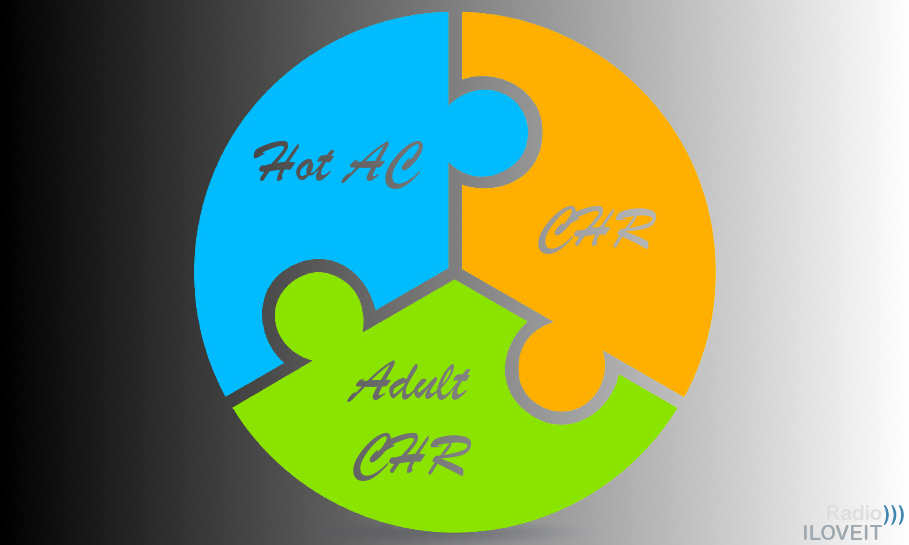MUSIC SCHEDULING Q&A #1 – HOW TO BUILD YOUR SONG CATEGORIES?
by Thomas Giger of www.radioiloveit.com
A music director in a developed market needed a category setup for his music format, taking his Adult Top 40 against a leading Hot AC and a tight CHR.
I’m receiving many inquiries from our readers regarding song categories lately, so I thought of sharing the following case with you. Maybe you have the same or similar questions, or would like to think along. With permission of the person who’s submitted the request, I’m sharing his inquiry and my answers here, hoping it will give you additional ideas and perspectives to optimise your music category setup as well. So here we go!
‘HELP YOUR LISTENER TO UNDERSTAND YOUR MUSIC FORMAT’


Your audience should feel a difference between recurrents vs. classics, so you want to move Recurrents over a certain age to Golds when they qualify (images: Def Jam, Atlantic Records)
CASE DESCRIPTION
A radio programmer from the UK recently emailed:
Hi Thomas,
I hope you’re well. I’m a member of your site and so far it is proving so helpful. I’ve only recently taken over the whole of the music scheduling for our station in [a local market in the UK].
I’ve managed to steer the station through a complete rebrand from Hot AC to full CHR with new clocks. Your site really helped me out with understanding the mechanics behind taking 8 massive songs, making sure they are spread evenly, etc.
We have [a market-leading Hot AC] and [a popular CHR] down the road. We’re going for a CHR sound with oldies thrown in, like Ne-Yo, Flo Rida, etc. These are songs that are too hot for [the Hot AC brand], but too old for the strict [CHR station] logs.
At the moment I’ve got everything Top 40 in the typical A, B and C categories, then Recurrent for hits no longer in the Top 40 or that are old, like Galway Girl by Ed Sheeran, and then an Old Recurrent category for things like Ne-Yo, Flo Rida, etc.
I’ve then got a problem I’m wondering if you can help with. The station had set up a 2000s category, and this seems to have anything from 2000 to 2010, but crosses over massively with some of the Old Recurrent tracks (date wise).
How would you categorise all of this? Is it okay to have your Old Recurrent list spanning 10 years of music, or do we need to separate them out a bit more? Do we categorise it based on how much of a great song it is, or how old it is?
Thank you for your questions! I’ll start with the first one, which is connected to an important concept:
HIGHLIGHT YOUR FORMAT USP
In a pretty competitive market like yours, you definitely need a very distinct music profile. Your Adult CHR programming strategy (positioning yourself in between your Hot AC and CHR colleagues) seems like a smart move, because even while all 3 of you do have music crossovers, at any given time you’ll play some songs that they won’t play (and they’ll play some songs that you won’t play).
As you’re a local station in the middle of two giant national brands, they will probably not respond to you (not change their format to grow closer to yours), so you should be pretty safe with this. To make your audience understand your unique selling point regarding your music, you’d want to expose your ‘USP songs’ often enough to be noticed. You could schedule a recurrent or a classic once every 3 songs, for example in an ‘A, C, Recurrent — A, B, Gold’ sequence.
DEFINE YOUR CATEGORY THEMES
To establish a very clear music image, help your listener to (subconsciously) understand your music format, and to (subconsciously) keep your categories apart. I’d stick to one single theme per category, and make sure that every theme/category is different enough from any other theme/category. In this case, your audience should be able to feel a difference between recurrents vs. classics for your format.
You can establish an age border for Recurrents, like ‘maximum 3 years old’ (which is a lot for Recurrents already), and create a separate (Gold) category for older titles that still deserve to be played after passing the 3-year line. To maintain your desired CHR sound, carefully choose which Golds you really want to keep playing, or you may end up with a Hot AC image after all (getting too close to your competitor in terms of era).
‘WITH GREAT AMOUNTS OF MUSIC CATEGORIES COMES GREAT RESPONSIBILITY FOR MUSIC DIRECTORS’


It’s not Uncle Ben’s Voltaire quote from Spider-Man, but you get the idea (image: Columbia Pictures)
CATEGORISE YOUR SONG AGE
As you focus on Adult CHR 00s classics with an Urban Pop flavour (Ne-Yo, Flo Rida) and your Hot AC friends are leaving those out — and, as I see, play many 80s & 90s classics from various music genres (Madonna, The Goo Goo Dolls) — it looks like you can perfectly feature 00s & 10s classics that fit your Urban & Rhythmic profile indeed. As your library titles go back to the year 2000, you may want to spread your Golds into sub categories that allow you to create era balance in your clocks. Then, your category setup may look like this:
- A, B & C: 2017
- Recurrent: 2015-2017
- Gold Recent: 2010-2014
- Gold Classic: 2000-2009
or, when you’re not necessarily looking to split your Golds at the turn of a decade, like this:
- A, B & C: 2017
- Recurrent: 2015-2017
- Gold Recent: 2007-2014
- Gold Classic: 2000-2006
CATEGORISE YOUR SONG POPULARITY
Regarding your second question — should we categorise based on how much of a great song it is, or how old it is? — both! The above 6 music categories are great basic descriptions of a song’s life cycle, but you also want to categorise your Currents, Recurrents and Golds based on popularity. (For Currents, you’re already doing that with A, B & C.)
Music research indicates that only a small amount of songs is really hot, so when you’re indexing say 400 tested songs along a 1-100 scale, considering ‘80+ scores’ as your most popular songs, you may end up with just 40 titles (10%) that people really ‘love’, and 360 titles that are ‘nice’ or ‘okay’ (just an example). So it does make sense to factor in the popularity, for which you could fine-tune your song category list like this:
- Current A / Current Power (very familiar, and very popular)
- Current B / Current Secondary Down (very familiar, but on the way down)
- Current C / Current Secondary Up (less familiar, but on the way up)
- Recurrent Power
- Recurrent Secondary
- Gold Recent Power
- Gold Recent Secondary
- Gold Classic Power
- Gold Classic Secondary
CREATE YOUR FORMAT CLOCK
Of course, we now went from 6 to 9 categories, and to adjust a well-known movie quote: with great amounts of music categories comes great responsibility for music directors. Especially smaller categories (like power categories) come with a greater risk that a certain song will end up in the same position within the hour if you were to use the same format clock or category sequence everywhere (also depending on whether there’s a great amount of unbreakable scheduling rules).
The more song categories you have, the more format clocks you need, which is luckily very easy when you have a main format clock with several different variants that you then alternately schedule in a rotating clock grid. You can find more information in a previous article about Contemporary Hit Radio music scheduling & format clocks. I hope this is helpful for now, but do let us know if you have any more questions about music categories for your music scheduling.
In Music Scheduling Q&A #2, we’ll talk about how many songs there could or should be in a given music category!
 Thomas Giger is a European radio broadcasting specialist and publisher of Radio))) ILOVEIT, based in the Netherlands, and serving the radio industry worldwide.
Thomas Giger is a European radio broadcasting specialist and publisher of Radio))) ILOVEIT, based in the Netherlands, and serving the radio industry worldwide.
Please fill out this form and we’ll reach out right away to schedule your demo.

